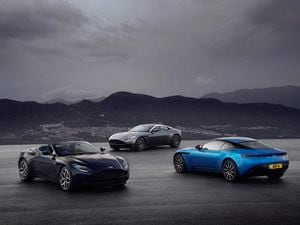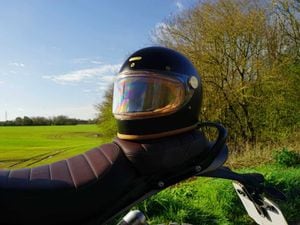The history of Aston Martin DB cars
From DB2 to DB11, we take a look back through one of the most iconic nameplates in motoring

Aston Martin has produced some of the most recognisable cars in history. Ever since James Bond first drove a DB5 in the 1964 film Goldfinger, the brand’s DB cars have been indelibly etched into the UK’s motoring psyche.
The DB line of cars has been incredibly popular, accounting for almost half of the brand’s sales. It was named for Sir David Brown, who purchased the brand along with Lagonda in 1947, turning it from a small-time cottage workshop into a full-blown manufacturer.
The company’s survived financial woes, several acquisitions and two World Wars – and is now a truly global brand, posting strong sales across the world. It’s this DB line that’s helped the brand achieve such fame and fortune.
Here’s a quick look back at one of the most iconic nameplates in motoring…
Aston Martin DB1: 1948-1950

Aston Martin DB2 and DB2/4: 1950-1957

Later cars were named the DB2/4 and featured more power – 125bhp, later increased to 140bhp thanks to an uprated, 2.9-litre block.
It was the first Aston to really capture the public’s imagination, and demand immediately following its debut at the 1950 New York Motor Show was huge. Aston’s factory couldn’t keep up with the unprecedented demand, and in the end 411 models were built.
Aston Martin DB Mk III: 1957-1959

The DB Mk III gained the first iteration of Aston’s iconic grille, and featured wide-ranging mechanical upgrades – there were disc brakes, along with an optional automatic transmission and dual-exhaust system.
Aston Martin DB4: 1958-1963

It was the first Aston to feature an engine developed wholly in-house – a 3.7-litre straight-six, the first product of legendary Aston engineer Tadek Marek. It produced 240bhp, and was capable of 140mph.
Aston Martin DB5: 1963-1965

It’s funny, considering Aston’s initial reluctance to participate. Company executives initially demanded that the film’s producers purchase the car outright, then offered a car on the basis that it was returned entirely unscathed. Eventually a product placement deal was agreed, and the iconic partnership began.
Aston Martin DB6: 1965-1971

Though it’s never been a Bond car, the DB6 is owned by somebody nearly as cool – Prince Charles, who has a DB6 Volante convertible which was given to him by his mother.
Aston Martin DBS: 1967-1972

It stuck with the classic straight-six, though the original design called for a V8 that was later added. Production continued until 1972, after which the car was facelifted and named the Aston Martin V8. It’s another car with Bond history, having appeared in the 1969 film On Her Majesty’s Secret Service.
Aston Martin DB7: 1994-2004

Under the skin sat a supercharged straight-six engine, but the chassis deserved more and gained a V12 engine with 435bhp and 540Nm of torque.
Aston Martin DB9: 2004-2016

Penned by Aston’s own Marek Reichman and Henrik Fisker – now of Fisker Automotive – the car featured a 5.9-litre V12, which while objectively outgunned by competitors became much-loved thanks to its old-school character and sonorous tone.
Aston Martin DBS V12: 2007-2012

The DBS produced 510bhp from its 6.0-litre V12 – giving it the power to match its gorgeous looks.
Aston Martin DB11: 2016-

Aston also offers a choice of engines, with customers able to choose an AMG-sourced V8 or an Aston-developed V12. Both are turbocharged, in a first for the company. There’s also a truly stunning Volante convertible model available.
With the DB11, as well as the latest Vantage, Aston Martin’s fortunes are decidedly rosy – so much so that the company’s investing huge amounts of money in a new production facility in Wales, ready to build the DBX SUV. But regardless of how that car performs, we can be sure that the iconic DB line is in good hands.





